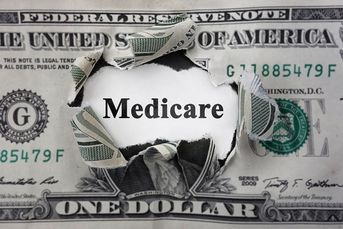Tax bill may change your clients’ health-care costs
Pay attention to new rules for the "individual mandate" requirement and the medical expense deduction floor.
The newly signed Tax Cuts and Jobs Act will affect how much your clients pay out of pocket on health care, in several ways. The effects will be both short term and medium term:
• The “Individual Mandate” will be eliminated by Jan. 1, 2019.
• There is a temporary reduction in the medical expense deduction floor, from 10% to 7.5% for 2017 and 2018.
The Individual Mandate is eliminated by Jan. 1, 2019. Regardless, the Individual Mandate requirement is in effect for 2017 and 2018. During that time, all tax payers, other than those who are exempt from the health insurance requirement, must have minimum essential health insurance coverage.
Folks who do not maintain that type of coverage are obligated to pay the “shared responsibility payment,” otherwise known as the penalty. The 2017 “shared responsibility payment” is 2.5% of yearly household income or $695 per uncovered person, whichever is higher.
That penalty is figured into the 2017 tax return. Healthcare.gov has more detailed penalty information. The Kaiser Foundation’s online calculator is useful to estimate “shared responsibility payment” amounts.
(More: Affluent Americans inundate accountants for advice)
Another other short-term impact of this new legislation is a temporary reduction in the medical expense deduction floor. The floor, which was scheduled to be 10% in 2017, will now be 7.5% for 2017 and 2018. That threshold returns to 10% in 2019. Each dollar spent on health care beyond the 7.5% threshold is discounted at the person’s tax rate and reduces their tax burden.
WIDE IMPACT
The impact of this change will affect people who may not anticipate it. Most of us tend to think of people who can take a “medical deduction” as being quite ill, requiring many medications, and other health-care services. Increasingly, due to high-price health premiums for individuals, small businesses and sole proprietors, there are many more folks who will exceed the medical deduction 7.5% threshold in 2017 and 2018.
IRS Publication 502 (2017), Medical and Dental Expenses, includes a wide array of health-care goods and services that are eligible as “medical deductions.” Beyond medical services, premiums and dental care, unexpected services — such as lead-paint abatement — may be included.
ADVISORY SERVICES
It is ever more important to incorporate tax advice into personal financial services. Whether the adviser provides tax advice or establishes solid working relationships with tax advisers, doing so can generate tremendous value for clients.
Even if you don’t provide tax services you can share this information with your clients as they prepare their 2017 tax return documentation. Below is the annual and monthly breakdown of the 7.5% medical deduction floor at various income levels for 2017 and 2018. I provide the monthly floor as a point of reference. The law does not require monthly expense amounts, but many people find it helpful to think in such terms.
(More: HSAs next cash cow for 401(k) plan advisers: expert)
For adjusted gross income (AGI) of $50,000 the annual floor is $3,750 and the monthly floor would be $313. For AGI of $100,000 the annual floor is $7,500 and the monthly floor would be $626. For AGI of $150,000 the annual floor is $11,250 and the monthly floor would be $938. For AGI of $200,000 the annual floor is $15,000 and the monthly floor would be $1,251. For AGI of $250,000 the annual floor is $18,750 and the monthly floor would be $1,564. For AGI of $300,000 the annual floor is $22,500 and the monthly floor would be $1,877.
UNCERTAIN FUTURE
The medium-term effect of the Tax Cuts and Jobs Act will be magnified by anticipated net federal tax revenue losses. There will be increasing pressure to deal with cost escalations of all governmental expenditures including health-care spending on Medicare, Medicaid, military and veterans’ health care as well as federal employee and retiree health care.
The strain of these costs has been building for years. Rather like the proverbial pressure cooker, many wonder when that pressure will reach an eruption point that leads to major changes. I don’t have a crystal ball with an answer. As I always say, stay tuned . . .
Katy Votava, Ph.D., R.N., is president of Goodcare.com, a consulting service that works with financial advisers and consumers on health-care coverage.
Learn more about reprints and licensing for this article.







